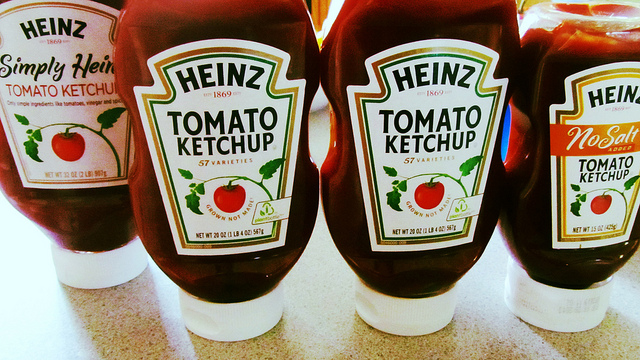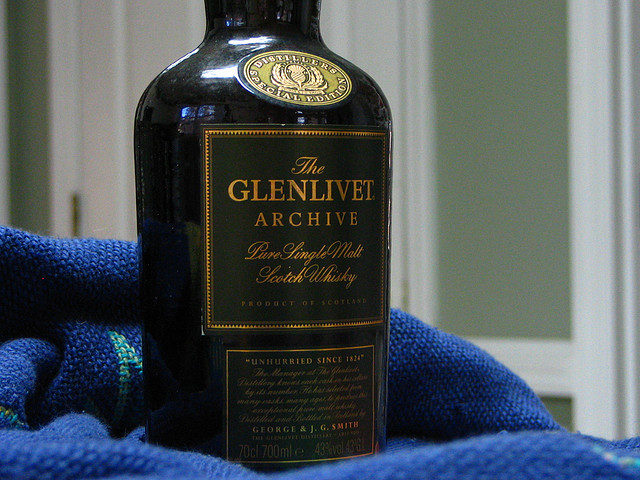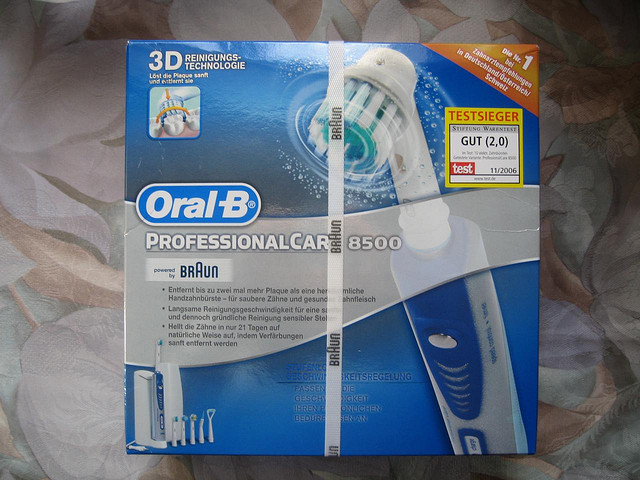How to Differentiate Your Brand

“In real estate, it’s location, location, location. In business, it’s differentiate, differentiate, differentiate.” Roberto Goizueta, former Chairman of Coca-Cola.
The most challenging task for any marketer is to figure out how to differentiate his or her brand vis-à-vis competition. BlueBarn has a number of posts on this very important subject; however, since differentiation is the bedrock of any successful brand strategy, here’s another one.
Of course, every brand wants to be unique or at least to be seen as one. However, in a competitive environment, most brands end up achieving parity in quality within their price band. So what do they do? They just rely on the execution of their advertising campaigns to try and convince consumers about their uniqueness. Most of the time, this approach doesn’t work.
Trying to be different or unique is not a new idea. In the 1960s, Rosser Reeves came out with the concept of the Unique Selling Proposition, the USP. In his book, Reality in Advertising (reviewed in BlueBarn and also attached in an article in the site), Reeves defined USP in three parts:
- Each advertisement must make a proposition to the consumer—not just words, product puffery, or show-window advertising. Each advertisement must say to each reader: “Buy this product, for this specific benefit.”
- The proposition must be one the competition cannot or does not offer. It must be unique—either in the brand or in a claim the rest of that particular advertising area does not make.
- The proposition must be strong enough to move the masses, i.e., attract new customers as well as potential customers.
Sadly, today, we see a surfeit of me-too propositions and meaningless slogans. Many marketers and advertising agencies have just given up on identifying a relevant and powerful differentiator for their brands.
Of course, finding a relevant and powerful differentiator is not always easy in these highly competitive times. However, there are some proven ways that one could look at, but don’t. But before we come to those, let’s look at some not-so-good ways to differentiate that many marketers think are valid differentiators:
- Quality may not be a differentiating idea. Why? Because, within a price band, consumers take quality as a given. If you don’t offer acceptable quality within a category/price band, you will be history pretty soon. Of course, a BMW is better in quality than most Suzuki brands but that is like comparing oranges with apples – a BMW 3 Series is way more expensive and has a totally different set of consumers compared to, say, a Ciaz. However, if companies start competing on quality within a price band, most of them will end up reaching parity over time; an improvement in quality by one player will soon be matched by others. I mean, which is a better car between a BMW, a Mercedes and an Audi. I don’t think anyone knows. Or cares. A person ends up choosing one of these on other considerations.
- Customer service may not be a differentiating idea. Many experts, like Wiersema and Treacy, have argued that companies and brands can differentiate on customer intimacy and service. There are companies like Nordstrom that have made a name for themselves because of their outstanding service. However, in today’s competitive world, customers demand good service from all companies and, if you want to compete effectively, you will need to ensure that your company is offering service on par with competition.
- Creativity is not a differentiating idea. Sure, your ad campaign must be impactful and, possibly, even entertaining. However, if it doesn’t communicate a valid differentiating idea, it is not likely to do your sales any good. Creativity without substance is puffery.
So what could be good ways to differentiate? Here are some:
- Being first. If you are the first player in a category or if you are the first with an idea or a benefit, you will steal a march over the brands that follow. You will be seen as the original and once you establish that position in the minds of consumers, you will stay ahead. Consumer perceptions change slowly and if your brand gets into the minds as the first brand in a market, it will stay there for long. Of course, it is important that you don’t rest on your initial advantage; you will have to work on keeping ahead because the marketplace is strewn with brands that were first in a category but then gave way to more innovative and aggressive competitors.
Once a brand is first in the mind, it is difficult to dislodge it. Coca Cola was the first established cola drink and Time magazine was the first news magazine. Pepsi, Newsweek and others tried hard but failed to dislodge their established competitors.
Visual courtesy: https://www.flickr.com/photos/damclean/
- Attribute ownership. Owning a relevant attribute is a good way to differentiate. Of course, different attributes have varying importance to consumers and you must ideally try and own the most important one. Once you do that, you can gain immensely. In India, Kelvinator owned the ‘cooling’ attribute in the refrigeration category for very long and was perceived by consumers as being the best in cooling. Volvo latched on to the ‘safety’ attribute; even today, when the brand is not as buoyant, consumers perceive Volvo as one of the safest cars brands.
When you own an attribute, you must work towards justifying it. Take the Volvo example – ever since taking the ‘safety’ position, the company has worked towards a number of safety innovations over the years.
Visual courtesy: https://www.flickr.com/photos/morberg/
- Sales leadership. Sales leadership is a powerful differentiator. People have a herd mentality – they want to buy the most popular. People are also risk averse and feel comfortable following others. So if you have a lead in sales, shout about it. Amazingly, I have met many marketers who feel that talking about being no.1 in sales is boastful. They don’t do it and miss out on a very powerful way of differentiating.
Heinz is the no.1 ketchup in the U.S. and has never been shy of making a song and dance about it. There are a number of other examples.

- Technology leadership. In today’s technological world, if you are a pioneer or leader in a particular technology, make sure that the world knows about it.
Visual courtesy: https://www.flickr.com/photos/thomashawk/
Intel has been the leader in semiconductor chips and has maintained its leadership stance via the ‘Intel Inside’ campaign. In fact, Intel is seen as such a powerful brand that computer brands actually use the ‘Intel Inside’ logo on their computers as one of the ways to satisfy consumers.
- Performance leadership. FedEx is an example of a company that grew on the back of performance. They promised overnight delivery of small packages anywhere in the US and kept that promise.
Visual courtesy: https://www.flickr.com/photos/openskyphotographer/
- Heritage. Brands that have a long and successful history should talk about it. For example, many brands marketing Ayurvedic, Unani and Chinese medicines have used heritage successfully to become successful.
The Glenlivet distillery is a distillery near Ballindalloch in Moray, Scotland and is the oldest legal distillery in the parish of Glenlivet. The distillery was founded in 1824 and the Glenlivet distillery has grown in the post-war period to become one of the biggest single malt distilleries. Glenlivet has used heritage extremely successfully – it has used the slogan ‘The single malt that started it all’ in its advertising and packaging.
Visual courtesy: https://www.flickr.com/photos/atypically_me/
- Specialisation. The more focussed a brand is, the more likely that it will be successful.
Take, for example, the Finnish company Nokia. In the 1970s, Nokia was into various product categories producing, at various times, paper products, car and bicycle tires, footwear (including rubber boots), communications cables, televisions and other consumer electronics, personal computers, electricity generation machinery, robotics, capacitors, Military technology and equipment, plastics, aluminium and chemicals. In 1992, Jorma Ollila took over as the CEO and made the crucial strategic decision to concentrate solely on telecommunications. This focus on telecommunications and its early investment in GSM technologies made the company the world’s largest mobile phone manufacturer, a position it held until 2012. Between 1996 and 2001, Nokia’s turnover increased almost fivefold from 6.5 billion euros to 31 billion euros. It was only Nokia’s misreading of the game changing potential of smartphones that saw its takeover by Microsoft.
Germany has been built on its small and medium scale companies, the Mittelstand. Mittelstand companies are highly focused, achieving unprecedented efficiencies by designing a business model with a razor-thin focus and learning to do the one thing really well; then to compensate for their razor-thin focus, they diversify internationally and enjoy great economies of scale. You may not have heard on many Mittelstand companies but they are world leaders in their categories and are highly profitable.
Gulfstream Aerospace, the American wholly owned subsidiary of General Dynamics, has specialised in business-jet aircrafts and have built a very successful business through this focus. Since 1958, it has produced more than 2,000 aircrafts in the business-jet segment.
Visual courtesy: https://www.flickr.com/photos/pseudopolis/
- How a product is made. I am sure that many of you would not have heard of Claude Hopkins, the legendary copywriter, and his advertising for Schlitz beer. (The Schlitz story below is adapted from www.wordsmithbob.com).
In the early 1900’s, Schlitz beer was in trouble, languishing behind a number of other beer brands. So they hired Hopkins to create their next ad. At the time, all beer companies advertised their beer the same way – they spoke about how pure their beer was. But since everyone was making the same claim, the consumers really didn’t pay too much of attention.
Hopkins took a tour of the Schlitz brewery. There he was saw plate-glass rooms where beer was dripping over pipes. Asking why this was being done, Hopkins was told that the rooms were filled with filtered air so the beer could be cooled without impurities. He then saw huge expensive filters filled with white-wood pulp that provided a superior filtering process. The manufacturer then went on to explain how they cleaned every pump and pipe, twice daily to assure purity. And also how each bottle was sterilized not once or twice, but four times before being filled with beer. Then, Hopkins was shown the 4,000 foot deep artesian wells dug to provide the cleanest and purest water available, even though the brewery sat right on the shore of Lake Michigan. (At this time Lake Michigan was not polluted and could have provided clean water.) Finally, Hopkins was led into a laboratory and shown the mother yeast cell that was a product of 1,200 experiments to bring out the robust flavor. And he was told all the yeast used in making Schlitz beer was developed from that original yeast cell.
“My God,” Hopkins said, “Why don’t you tell people in your advertising about all these steps you are taking to brew your beer?” But, the Schlitz people told him, “All companies brew their beer about the same way.”
“Yes,” Hopkins countered, “but the first one to tell the public about this process will gain a big advantage.” Hopkins went on to create an advertising campaign based on what he’d learned from the tour. Essentially, he told the story that every brewery could have; but didn’t. Within six months, Schlitz became the number one selling beer in America. Why? Because rather than telling people the same thing everyone else in their industry was saying, they actually explained what it meant and gave people a reason to care.
Today, Apple is using a similar strategy to market its laptops. In its video, Apple’s Senior Vice President of Design passionately describes—and shows—how the body of each MacBook Pro laptop is carved from a single block of metal. According to Apple, this increases the reliability and robustness of the laptop, and allows it to be lighter and smaller. It’s a brilliantly persuasive piece of marketing. (www.conversion-rate-experts.com).
Although founded only in 1983, Papa John’s has become the third largest pizza brand in the U.S. Papa John’s has been built by focussing on the quality and freshness of their ingredients. It informs the customer that every traditional crust pizza is made with fresh dough, never frozen, and prepared with clear-filtered water in the company’s regional quality control center. It lets the buyer know that Papa John uses only fresh packed tomato sauce from the vine to the can in an average of six hours. All the cheese on the pizza is made with 100% mozzarella, 100% real beef and pork that contain no fillers. (www.123helpme.com).
Visual courtesy: https://www.flickr.com/photos/mhaithaca/
- Where a product is made. Countries and even district and cities gain a reputation for making great products in a certain category. I mean, even for some delicacies, countries and cities acquire an almost hallowed reputation. Vodka – Russian are the best; China – nothing to beat English china; Pethas (!) – has to be from Agra. France has been great in marketing its wines and many of them are exclusive to districts in France. Sparkling wine is Champagne only if it is from the Champagne region and wine is Burgundy only if it is from the Burgundy region.
When you think of Japan, you think of cars and electronic products. The US has an enviable reputation for hi-tech products, mass consumer products, soft drinks, toys, cigarettes, fast food brands, entertainment and jeans. Germany has always had a reputation for engineering excellence. France has always been seen as a country that makes great wines, perfumes and luxury goods. And Switzerland has always been associated with watches.
This shows that where a product is made can be a strong differentiator.
Visual courtesy: https://www.flickr.com/photos/lhhais/
- Personality. Personality can be defined as the sum total of the physical, mental, emotional, and social characteristics of an individual. And strong brands have strong personalities.
In BlueBarn, we have written about archetypes and how different brands have followed different archetypes to build a unique personality for themselves. Carl Gustav Jung, the Swiss psychiatrist and psychotherapist, was one of the first persons to introduce the concept of archetypes in psychology. In their book, The Hero and the Outlaw – Building Extraordinary Brands Through the Power of Archetypes, Margaret Mark and Carol S. Pearson examined 12 of the most common archetypes and the brands that have, consciously or unconsciously, followed these archetypes. The 12 archetypes:
- The Innocent
Brands: Coca Cola, McDonald’s, Ivory
- The Explorer
Brands: Ford Explorer, Starbucks, Rockport
- The Sage
Brands: Barnes & Nobles, Lean Cuisine, CNN
- The Hero
Brands: Nike, FedEx, the Red Cross, the Olympics
- The Outlaw
Brands: Apple, Diesel, Harley-Davidson
- The Magician
Brands: MasterCard, Chanel No.5, Oil of Olay
- The Regular Guy/Girl
Brands: IKEA, Wendy’s, Impulse
- The Lover
Brands: Hennessy, Godiva, Jaguar, Guess Jeans
- The Jester
Brands: Pepsi, Snickers, Hampton Inn
- The Caregiver
Brands: AT & T, Johnson’s Baby Shampoo, Marriott
- The Creator
Brands: Sesame Street, Lego, Crayola
- The Ruler
Brands: Microsoft, Mercedes, American Express
Archetypes are not the only way to build a personality of a brand though they do provide an excellent framework. If you could create a distinct personality for your brand – and by that I mean one clear-cut, unambiguous personality, not a schizophrenic one – you could differentiate your brand extremely successfully.
Visual courtesy: https://www.flickr.com/photos/gerardstolk/
- The opposite position. As we have written elsewhere in BlueBarn, there is always a market for the opposite point of view! In fact, if anything fails spectacularly it could well be because it took a position exactly similar to a leader or a strong brand. If a large proportion of people vote for the BJP, a fairly large chunk vote for the Congress as well (and some even vote for CPM/CPI!). When American cars were big and roomy, Volkswagen came out with the concept of a small car. When everyone was chasing IBM on mainframes, DEC came out with the minicomputer and became the second largest computer brand. Coke was an old, established brand; Pepsi reversed the image of Coke by ‘The Choice of a New Generation’ campaign.
The mistake most marketers make is playing it safe and doing things the way they are done – doing the opposite just seems too damaging or radical. The result is that many brands just become clones of other brands and just don’t go anywhere.
Visual courtesy: https://www.flickr.com/photos/mbk/
- Preference. In 1958, the U.S. toothpaste market leader was Colgate with a market share of 34.5%. Gleen at 20.5% and Pepsodent at 11.2% followed at no.2 and no.3. Crest, the second P&G brand after Gleen, was in the no.4 position with an 8.8% market share. Yet, two years later, Crest started its ascent towards the dominance of the U.S. toothpaste market. The breakthrough came when it became the first brand of toothpaste to receive an endorsement from the American Dental Association (ADA).
Today, Oral B is a major dental care brand on the back of endorsements (and use) by dentists. In fact, they use the line ‘The Brand Most Dentists Use Themselves Worldwide’ to build on preference.
Tylenol, America’s largest pain reliever, is nothing but acetaminophen (paracetamol to us Indians). Yet, it has built a formidable reputation (including surviving the Chicago murders) by suing a preference strategy. Its consistent tagline – ‘The Pain Reliever that Hospitals Use Most.’ British Airways used ‘The World’s Favourite Airline’ preference tagline for a number of years and became one of the most successful airlines in the world. Of course, for reasons only they know best, they have changed their tagline to the inutile ‘To Fly. To Serve.’
Visual courtesy: https://www.flickr.com/photos/clarita_it/
I hope this post has given you a good idea of how to try and differentiate your brand. The ways outlined above are not exhaustive -there can be other ways to differentiate you brand. In a previous post, we tagged an article by Derrick Daye in which he highlighted 50 ways that he thought you could differentiate your brand.
What must always be borne in mind that, whether you are a business or a brand, the only real way to market yourself (at the price that you want) is by differentiation. Else, you will only be fighting on price.
Sources: Wikipedia; Differentiate or Die, Jack Trout with Steve Rivkin; Killer Differentiators, Jacky Tai and Wilson Chew.
Post visual courtesy: https://www.flickr.com/photos/gwilmore/











